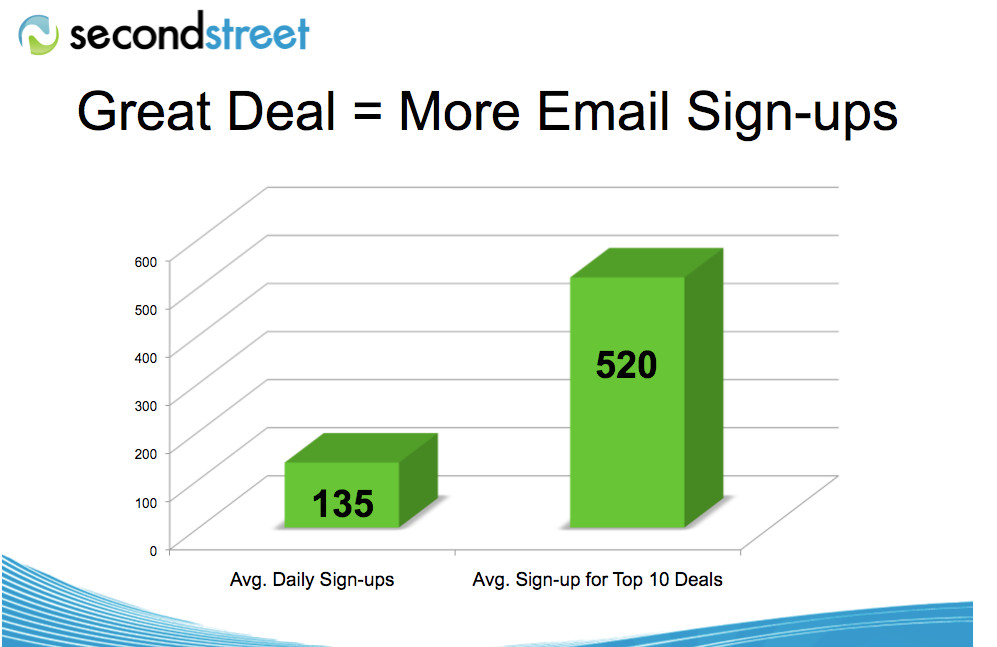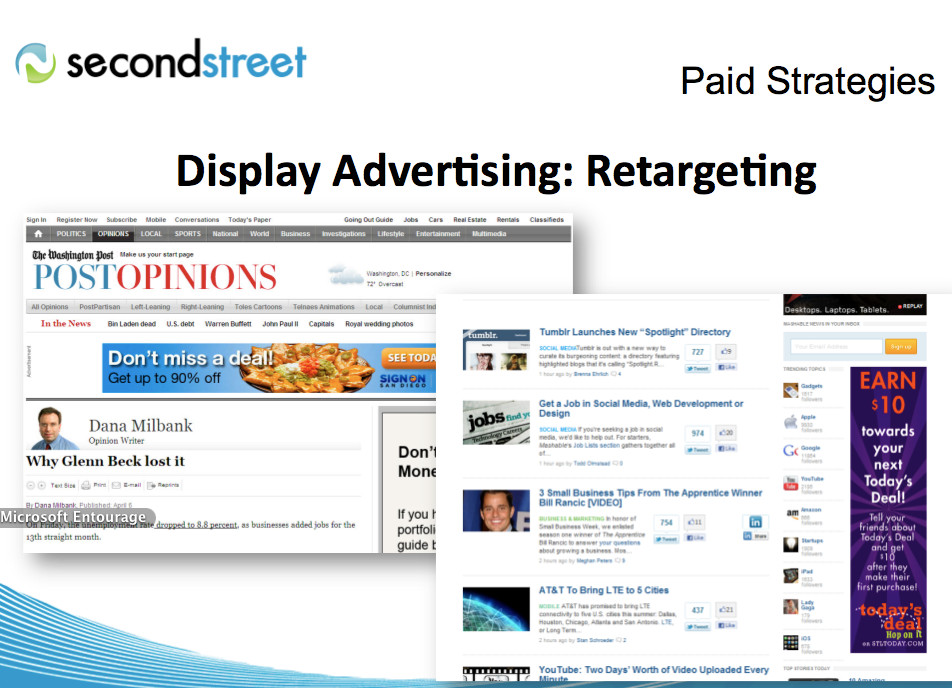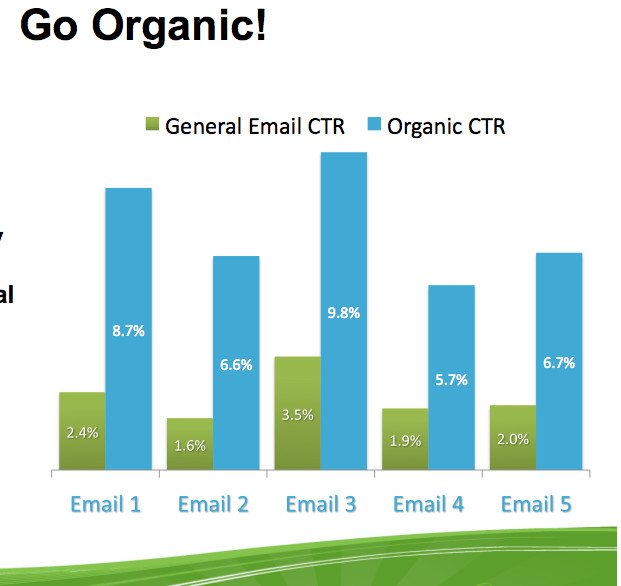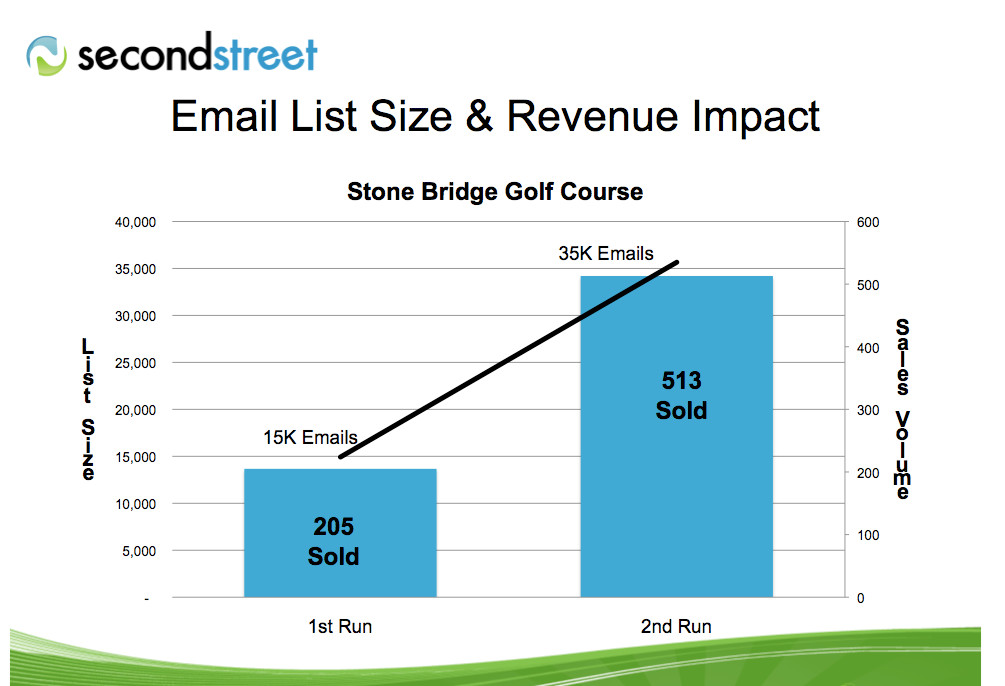How to grow a huge e-mail list
Best practices from Second Street Media
E-mail began to be of interest in driving deal revenue, and is now coming into its own for its ability to support a variety of advertising initiatives, from sales of targeted e-blasts to sales of ads and sponsorships of e-newsletters. so the size of the list is a key metric (see how to calculate the value of an e-mail name). With hundreds of deal partners and thousands of deals, Second Street Media is an expert in knowing what works. Here are their top seven best practices:
1. Set goals for increasing organic opt-ins
As a key revenue driver, the e-mail list needs goals. The first thing to look at it what kinds of e-mail lists are in your company, and focus on building the most valuable list. There are basically four kinds of mails: Organic, Promotional, General and Purchased.
a. Organic - The list of people who have explicitly opted-in to recieve targeted information, such as a newsletter or deals.
b. Promotional list - This second best list includes people who have also signed up for something else, such as a promotion. It is a key group of engaged people who "sign-up" for things your media has sponsored.
c. General - This list includes editorial opt-ins and circulation lists and are considered "general subscribers" who have not indicated interest in deals or other promotions. Click through rates from organic emails are typically two to three times higher than from general e-mails lists.
d. Purchased - Purchased lists are usually low quality and can even damage the brand, or worse, black-list your company. List vendors often resell the same list so many times, the spammed recipients are likely to file complaints.
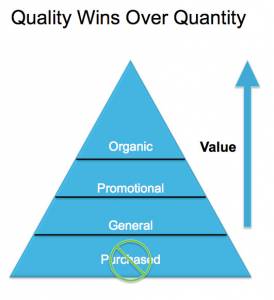 For deals, there is a direct ROI for organic e-mails, but the email audience is an asset of the company. Have specific short (this year) and medium (next few years) goals for list building, such as doubling the list or acquiring 50% of the e-mail addresses of residents in your DMA.
For deals, there is a direct ROI for organic e-mails, but the email audience is an asset of the company. Have specific short (this year) and medium (next few years) goals for list building, such as doubling the list or acquiring 50% of the e-mail addresses of residents in your DMA.
2. Great deals grow lists
A Second Street survey of all its media partners shows the average deal generates 135 new e-mails, but great deals can generate five to ten times this number (see "What makes a Whopper"). For example, Sign-on San Diego typically acquires 300 new e-mail names per deal, but it's latest "Whopper" a beach-side restaurant, not only generated $145,000... but also 1700 email names. At say, $13 per year per email name, that's also $22,000 in future revenue over one year. Some kind of deals program is a powerful way to accumulating the list. But it's not the only way.
3. Use all internal assets to promote email sign-ups (include the specific deal where possible)
All local media companies, large and small, have advantages that Groupon and Living Social did not: The media outlet and audience itself. As Tim Davis of Lee Enterprises put it, "Every touchpoint with the consumer is an opportunity to capture an email." Any email registration form can include some giveaway or discount from a customer, even if there is not a set deals program.
Here's a checklist of touchpoints to include:
* Offline and on-site advertising. Use these to promote specific deals and offer. If you have a great deal, throw more promotions behind it.
* On-premise signage. If the media has a deal program, employees and consumer traffic should know the deal of the day...Sign-on San Diego also posts deals in hallways and elevators every day (handled by the HR department).
* Add deals to the general e-mail registration page and any place where an order is taken. Knoxnews.com puts the actual deal every day directly on the general e-mail registration page. QuadCity Times added a sign-up form on their Facebook page.
*Run the daily deal “widget” on all pages of the web-site, not just the home page. If you use Second Street's platform, the deal widget automatically updates with new deals, so make sure it runs on every page of the site, not just the home page.
4. Use contests to build the general e-mail list
Contests not only engage new users but are a primary way to build really large general lists. Top vote-getting contests include Cutest Baby, Best of. Auto giveaways, cutest pet and fantasy sports. Find more contests by scrolling through this channel.
5. Use credits, referral fees and giveaways to build the organic list. A simple $5 to $10 credit for a referral of an email opt-in is one of the simplest ways to increase email lists quickly. They work!
Another variation is a discount: Refer three friends and get the deal for free. Basically the media partner absorbs the cost, about 25% on the deals that are sold this way, but once you know the ROI per e-mail, it generally makes sense.
And then there are giveaways. The best idea from Second Street's media partners was a “Win-an-iPad Giveaways (see image to the right) for people who registered:
 This promotion also had tremendous results; entering a giveaway is just the kind of extra incentive that will lead people who "already want to be on the list" to sign up at record speed.
This promotion also had tremendous results; entering a giveaway is just the kind of extra incentive that will lead people who "already want to be on the list" to sign up at record speed.
6. Paid advertising Both Google Adwords and Facebook are being used successfully to acquire new deal users outside of the regular local media audience. Keep in mind that Groupon spends $179 million on advertising Q1 of 2011 alone, for 32.5 million new registrants, local media budget can be expanded by the average revenue per opt-in email (see calculus here), to be safe, think roughly $10 a name, or $1000 for a hundred names. That’s a big budget on AdWords or Facebook, even in the fought-over deal space.
7. Direct events Acquiring opt-ins can be part of the schedule of offline events during the year. Make sure to have one or more great deals to promote at the events. Give aways can include scanning a qr code for a free drink or spin of the a roulette wheel, waver of the entry fee, or just a simple sign-up opportunity. Remember, e-mail is the preferred mechanism for people to receive deal information (64% noted this preference in a recent survey by eMarketer) and most (58%) sign up for two lists (also fromEmarketer).
The Washington Post is generating 250 sign-ups for CapitalDish, from each Happy Hour events, and other companies have used food events and Chamber gatherings to collect signatures.
Our take: Most local media companies need to be aggressive about securing market share in the email space, aiming for doubles and triples of their organic list, not just incremental growth. Building this into the promotional plan is key, in both small and larger markets.
Many thanks to SecondStreet Media for sharing their partners' best practices with us. There are more training materials on their site, secondstreetmedia.com; training and the quality of the webinars are one of the reasons this company is recommended deal and contest vendor/partner. The contact is Matt Coen, matt@secondstreet.com.

The author, Alisa Cromer is publisher of a variety of online media, including LocalMediaInsider and MediaExecsTech, developed while on a fellowship with the Reynolds Journalism Institute and which has evolved into a leading marketing company for media technology start-ups. In 2017 she founded Worldstir.com, an online magazine, to showcases perspectives from around the world on new topic each month, translated from and to the top five languages in the world.


